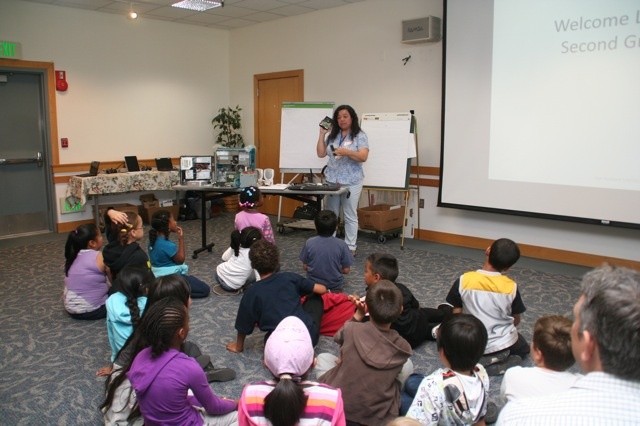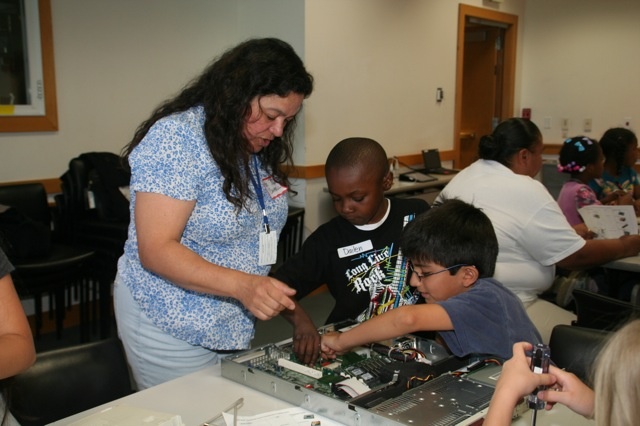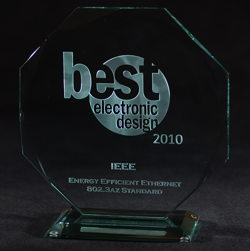IT has retained MOR associates to conduct our User Satisfaction and Strategy Survey. A sample of LBL employees will be selected by MOR and provided with unique links to the survey instrument.
The responses will help IT division better understand satisfaction and use of our services, as well as help us set strategic direction for our support of the Laboratory's missions.
The survey link will take you to the website of morassociates.com or mor-assoc.com. This is a legitimate LBL survey.
Thanks in advance for taking the time to complete the survey - your help is appreciated.
As in prior years, we'll post the complete results of the survey here when the analysis is completed.
If you have any questions, please don't hesitate to contact [email protected]
Google Docs now allows you to view all changes made to spreadsheets, documents and drawings by each collaborator. After accessing revision history through Google Docs, a pane will appear on the right-hand side with the collaborator’s name, as well as the time and date of change. In addition, Google Docs allows you to revert back to a previous version of a spreadsheet, document, and/or drawing. Click here for more information.
Last week, Jackie Scoggins from the High Performance Computing Services group addressed the 4th annual Adaptive Computing Moab User Group Conference (MoabCon 2011)) which was held May 10-12 in Provo, Utah. Moab is one of the most widely used job schedulers at large HPC installations. Jackie Scoggins presented a case study of how the LBNL IT Division manages job scheduling across a large number of clusters using a single scheduler.
Last week, the IT Division hosted Le Conte Berkeley Elementary School’s 2nd grade students for the second year of its educational outreach program. With the goal of introducing young students to the fundamentals of technology, the IT staff developed a curriculum that educated the students on how computers and networks support the science at Berkeley Lab.
Using hands-on activities, Le Conte students learned about the key components of a computer through analogies that were easily understandable. For instance, the CPU embodies the brain, networking corresponds to the delivery of mail, and programming can correspond to developing a sequence of commands to make a program draw a box.
The event was a fun-filled success, enjoyed by both students, teachers of Le Conte Elementary School, and even the parent chaperones - one of whom pronounced this as the best field trip so far this year. IT instructors and volunteers included Tammy Campbell, Nat Stoddard, Gary Jung and Nina Lucido.
Google Calendar now offers the ability to color code events in a single calendar. More information: http://gmailblog.blogspot.com/2011/05/color-code-your-google-calendar-events.html
Pivot Tables are now available within Google Spreadsheets. This important feature has been frequently requested by LBL users. More information: http://googleenterprise.blogspot.com/2011/05/pivot-tables-now-in-google-spreadsheets.html
Mike Bennett from the IT Division received an IEEE award sponsored by the IEEE Standards Association. The award was presented in recognition for leadership in developing IEEE Std 802.3az-2010™, more commonly known as Energy Efficient Ethernet or EEE in the industry. The standard was published in the fall of 2010. Ratification and publication of the standard marks a remarkable culmination of effort by the industry that was started by Mike Bennett, Bruce Nordman and Ken Christensen and resulted in the formation of a Task Force under the IEEE 802.3 Ethernet Working Group.
"It was rewarding to bring an idea that began as collaboration with Bruce Nordman in EETD and Dr. Ken Christensen at the University of South Florida to fruition as a standard, and it was a privilege to Chair a Task Force with such brilliant and talented engineers. New standard development can be challenging; nonetheless, Task Force members were collegial and truly professional. Additionally, without the great leadership from the Working Group, this project would not have been a success", said Bennett.
In addition to Mike receiving an IEEE-SA Working Group Chair award for his effort in leading the Task Force, Bruce and Ken received certificates of appreciation for their contributions. Electronic Design Magazine recognized the recently published standard by awarding the standard the 2010 Best Electronic Design in the Communications Wired category. The award was shared with Broadcom Corporation for their extensive EEE portfolio of products.
“This award is a great finishing touch, recognizing the hard work of the many talented engineers who contributed to the standard,” said Bennett. "Energy savings is a key pillar for networks of the future. This award underscores the importance of Energy Efficient Ethernet and is a testament to the work of the industry on the standard. Broadcom is shipping a wide portfolio of products that delivers on the promise of energy efficiency and our ongoing commitment to reduce the environmental impact of networking equipment," said Wael William Diab, Senior Technical Director in the Office of the CTO at Broadcom.
While end-user demand for bandwidth is driving energy consumption to higher levels, the new IEEE standard for Energy-Efficient Ethernet aims to reduce energy-use for many Ethernet links. Products supporting the new standard are already available and when fully deployed in the U.S., 5 Terawatt-hours per year, or enough energy to power 6 million 100 Watt light bulbs, will have been saved*. This is enough energy to light a 100 Watt bulb for every resident of Los Angeles for a year.
Additional Reading
IEEE 802.3az: The Road to Energy Efficient Ethernet, IEEE Communications Magazine
Broadcom Energy Efficient Networking
*Based on a conservative estimate of the energy that can be saved when links under typical use
We will be upgrading the Domain Controllers (DC) for Active Directory this month. This involves newer hardware as well as a change from Windows 2003 to Windows 2008 R2.
No customer impact is anticipated (approximately 2000 users and computers are members of the labs Active Directory environment).
In this first Phase, we will still run in a Windows 2003 functional level, which means all current platforms (linux, mac, and pc) now joined to AD will continue to be supported.
We will be introducing three new physical DCs and one new VM. Once these are running well, a gradual process of demoting the current DCs will start.
We have a generator protected Data Center environment in Building 50 - which is where both a physical box and a Virtual Machine will be located. We will also replace the DC at the ALS and most likely add another to one of the labs off site locations.
After an initial analysis of our current environment, we will introduce the first new DC later next week (perhaps May 12). The entire process will take 3-4 weeks.
We also plan to take a look at industry best practices and compare to our current internal procedures, with the goal of improving security. Recommendations resulting from this review will result in additional changes during the latter part of the year.
THESE SEMINARS ARE PROVIDED BY MATHEMATICA AND NOT BY IT
===============================================================================
New seminar titles featuring the latest technologies in Mathematica 8 are available to the technical computing community.
Here is what participants are saying:
"I am new to image processing and to Mathematica, and this seminar gave me a good sense of the potential capabilities of both."
"Great seminar, great overview of what data Mathematica can handle, and the audio quality was great! Thanks!"
"There was a complete review of the themes that I was looking for..."
Seminars vary from introductory overviews to advanced specialty topics and are presented by actual Mathematica developers and senior technical staff. Below are dates and times of our upcoming live online seminars. These seminars are given in English and they are free!
S18: Import and Export Data Formats in Mathematica
May 3, 3pm PDT
S11: What's New in Mathematica 8
May 4, 7am PDT
S71: Advanced GPU Programming Using Mathematica and CUDA
May 4, 9am PDT
S17: Applied Parallel Computation with Mathematica
May 5, 7am PDT
S12: Topics in First Year Calculus
May 6, 10am PDT
S51: Image Processing Applications
May 12, 7am PDT
S24: Working with Imported Data in Mathematica
May 12, 3pm PDT
Attend as many seminars as you like. See the complete calendar here:
Day 1:
Like many folks at LBL, I've been using an iPhone for several years now. Lately, I've been getting a number of questions about Android devices in terms of how they work with Google Apps, so I'm spending this month with a Samsung Galaxy S to get a better feel for how it works with our services. I'll be providing a few updates throughout the month, looking at the interaction with LBL apps as opposed to the overall differences between the two platforms (there are plenty of people online pontificating about that).
My Day 1 experience was nicely straightforward. Once I had provided my LBL Google Account credentials to my Android phone, my mail, contacts, and calendar all synced mostly as I expected. I experienced a few minutes of confusion with the difference between the mail app and the gmail app on the phone (you want the gmail one), but that was taken care of pretty quickly.
I'm sure there is a way to manage this, but I noted that all my LBL Google Apps contacts were synced to the phone, as opposed to just the ones in the Most Contacted directory, so my Galaxy S has a number of meaningless contacts in it that don't make a lot of sense - no big deal. Scrolling through the contacts, I liked that Google "presence" information is delivered next to my contacts for all Google users including LBL ones - I get a little green indicator that indicates whether the person is online and active in gmail/gtalk right next to their contact information.
One of the things I'm most excited about - and one of the things that frustrates me most about using the iPhone's built in mail app, is working more effectively with labels and stars. While I'm not an obsessive labeler, I often read email on my iPhone that I know I need to take care of later. I want to star those or mark them "todo," but there isn't a really easy way to do that on iPhone. The mapping of folders to labels thing is pretty inconvenient. In my next update, I'll talk about the Gmail App on Android's capabilities with regard to labels.
LBL users now have access to new refinements in the Google Docs List. You can upload entire folders to Google Docs, or drag and drop files directly on to the Docs list to initiate an upload and/or conversion. More information is available on the Google Apps blog.


